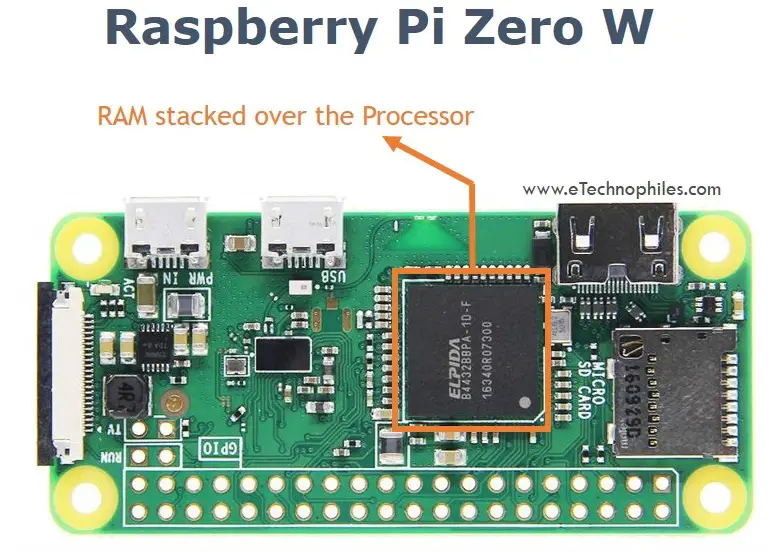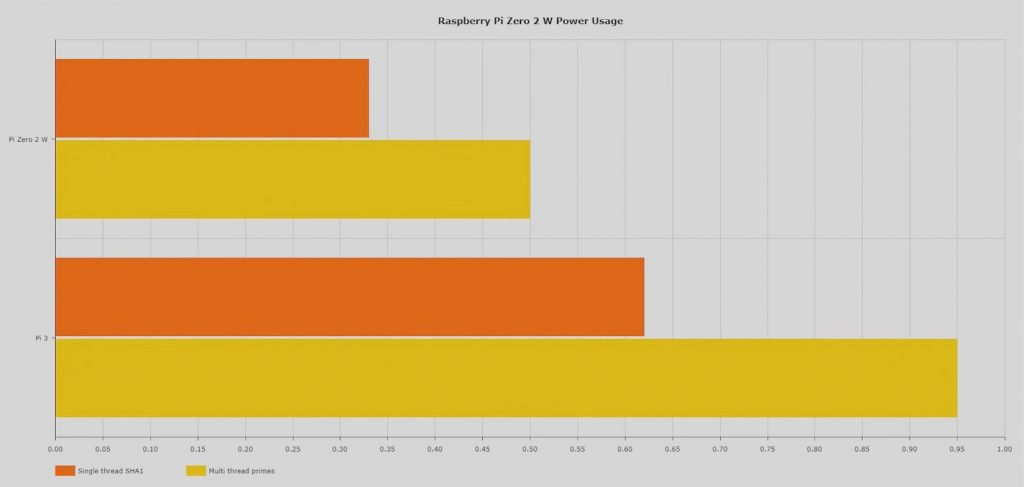Last updated on March 15th, 2024 at 11:57 am
In this post, We will discuss the differences between RPi Zero 2W vs Zero W. Such as comparison of their specs, design, speed, wireless connectivity, ports, performance and power consumption, etc.
Raspberry Pi Zero 2W is the latest single-board computer released by the Raspberry Pi foundation. Zero 2W is an upgrade to the original Zero W board and comes with some exciting new features. Since the form factor of Zero 2W is exactly similar to that of Zero W, the accessories and other add-ons remain the same.

Table of Contents
The similarities between RPI Zero 2W vs Zero W are also discussed. First of all, let’s take a look at the differences between them in the form of a table given below.
RPi Zero 2W VS Zero W: Brief overview

| Zero W | Zero 2W | |
|---|---|---|
| Package type | POP(Package on Package) BCM2835 | SIP(System in Package) RP3A0-AU |
| Processor | 32 bit ARM1176JZF-S (one core) | 64 bit ARM Cortex-A53 with 4 cores |
| Processor frequency | 1 GHz(Maximum).Can’t be overclocked | 1GHz. Can be overclocked to 1.3GHz |
| RAM | 512 Mb LPDDR2, stacked over the CPU | 512 Mb LPDDR2 Ram as part of the SIP with CPU |
| WLAN | 2.4 GHz 802.11 b/g/n | 2.4 GHz 802.11 b/g/n |
| Bluetooth | Bluetooth 4.1 with BLE | Bluetooth 4.2 with BLE(2.5 times faster) |
| OS(preferred) | Raspbian | Raspbian |
| Boot speed(Raspbian) | – | 3 times faster than the Zero W |
| Composite Video | As unpopulated 2 pin header on the front side | As solder test point on the backside |
| GPIO Header | 40 pin style | 40 pin style(no changes) |
| HDMI Port | Mini HDMI Type C | Mini HDMI Type C |
| USB Port | MicroUSB 2.0 (OTG) | MicroUSB 2.0 (OTG) |
| USB 3.0 | NO | NO |
| Power Supply | MicroUSB 2.0 | MicroUSB 2.0 |
| Dimensions | 65mm X 30mm | 65mm X 30mm |
| Overall Speed | – | 5 times faster |
Looking for detailed information on RPI Zero 2W? Read this article.
Specifications
Package type and processor
The RPI Zero 2W has a new SIP package RP3A0-AU having ARM Cortex-A53 processor and 512 Mb of LPDDR2 Ram as part of the SIP. The processor has 4 cores with a clock speed of 1 GHz but can be overclocked up to 1.3 MHz, hence a faster-operating speed.
RPI Zero W uses a POP package BCM2835 having an ARM1176JZF-S processor and 512 Mb of LPDDR2 Ram stacked over the processor. The processor has single-core and a maximum clock frequency of 1 GHz.
Wireless connectivity
Both boards have a wireless module(WLAN and Bluetooth) for wireless connectivity. Although the WLAN is the same in both the boards( 2.4 GHz 802.11 b/g/n), the Zero 2W has a Bluetooth upgrade. It uses Bluetooth 4.2 which is 2.5 times faster than the Bluetooth 4.1 installed in Zero W.
Note: Zero W and Zero 2W are the only Raspberry pi boards with pre-installed Wireless module.
Ports and GPIO header
GPIO header: Just like all the other Raspberry pi boards, the RPI 2W also has a 40 pin GPIO header with the same pinout and functions. Although both, Zero W and Zero 2W do not come with a pre-soldered header. This is done in order to minimize the cost.
HDMI port: Both have the same HDMI port: Mini HDMI Type C.
USB port: Zero 2W has 2 USB port configuration like the original Zero W with one MicroUSB 2.0 (OTG) for peripherals and other MicroUSB 2.0 for power. None of them comes with a USB 3.0 port.
Dimensions
The dimensions of Raspberry pi Zero 2W are similar to that of Zero W: 65mm X 30mm. Hence the accessories of RPI Zero W are compatible with Zero 2W also.
Design
New SIP design in RPI Zero 2W
As mentioned above, the new Zero 2W uses new packaging technology called SIP or System in Package for the processor and RAM(RP3A0-AU). Whereas the Zero W had PoP technology OR Package on Package. Let’s look at this in more detail.
When the RPI zero was designed, engineers wanted to make it so compact that they end up placing the RAM over the processor. And this package is called SIP or System in Package.


In this case, the processor(SIP) is first soldered to the PCB board. Then an SDRAM is placed over this processor and soldered to the PCB while making sure that the processor fits perfectly inside the SDRAM or between the legs/ball points of the SDRAM that connects it to the PCB. This arrangement is called package on package chip or POP.
In this case, the design is limited by the size of the processor as finding the desired processor with a perfect size that fits under the desired RAM is very difficult.

Hence for using a high-end processor, the hardware designers came up with a better solution for the RPI Zero 2 W: System in a Package. In SIP design, the RAM can be placed over the processor of any size because there is overall one single package that is soldered onto the PCB.

This solved the issue of being limited to only a particular type of processor while minimizing the form factor at the same time.
Composite video output
The output for composite video is provided as solder test point on the backside of Raspberry Pi Zero 2W as opposed to the unpopulated 2 pin header on the front side of Raspberry Pi Zero W.
Price difference
Raspberry Pi Zero 2W is priced at $15 and can be found on the website of Raspberry pi approved sellers. The cost of 2W is $5 more than the Zero 2W which is priced at $10.
Benchmarks
Performance
Due to 4 cores in the new Zero 2W as compared to a single-core in Zero W, its performance is expected to be far better
Gary sims from GARY EXPLAINS carried out some tests on Raspberry pi Zero W and compared RPI Zero W, 3B, and 4 with it. He performed some single-threaded and multi-threaded calculations using his thread test tool.
Given below is the graphical representation of their performance:

RI Zero 2W is 5, 2.5, and 1.5 times faster than Zero W while performing multi-thread, single thread SAH, and single thread operations respectively.
The PI 4 beats the Zero 2W in all three operations by a big margin. That’s why it is still a better option for desktop applications.
Note: The Pi 3 outperforms Zero 2W in all three categories even though both have the same processor because Pi 3 is clocked at a higher clock rate than Zero 2W.
Power consumption of RPI Zero 2W
The RPI Zero 2W consumed almost 0.3 and 0.5 Amps of current for single-threaded and multiple threaded tasks respectively as compared to the 0.6 and 0.95 amps of current consumed by the RPI 3.

This is obvious due to the higher clock speed of the RPI 3. Although the power consumed by Zero 2W is less, the time it takes to complete the task is more than the RPI 3.


Your picture RPi Zero 2W VS Zero W: Brief overview is mislabeled.
Hi Dave,
Thank you for pointing out the error, much appreciated.
The image has been corrected now 🙂
It appears the Zero 2W does .5 amp with max CPU! Much better than the PI 4
Thanks
Glad to be of help